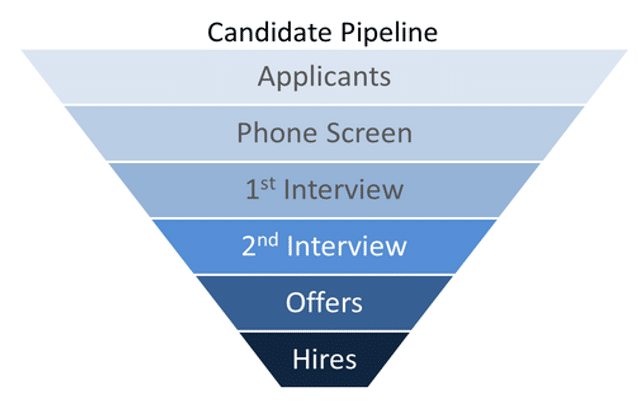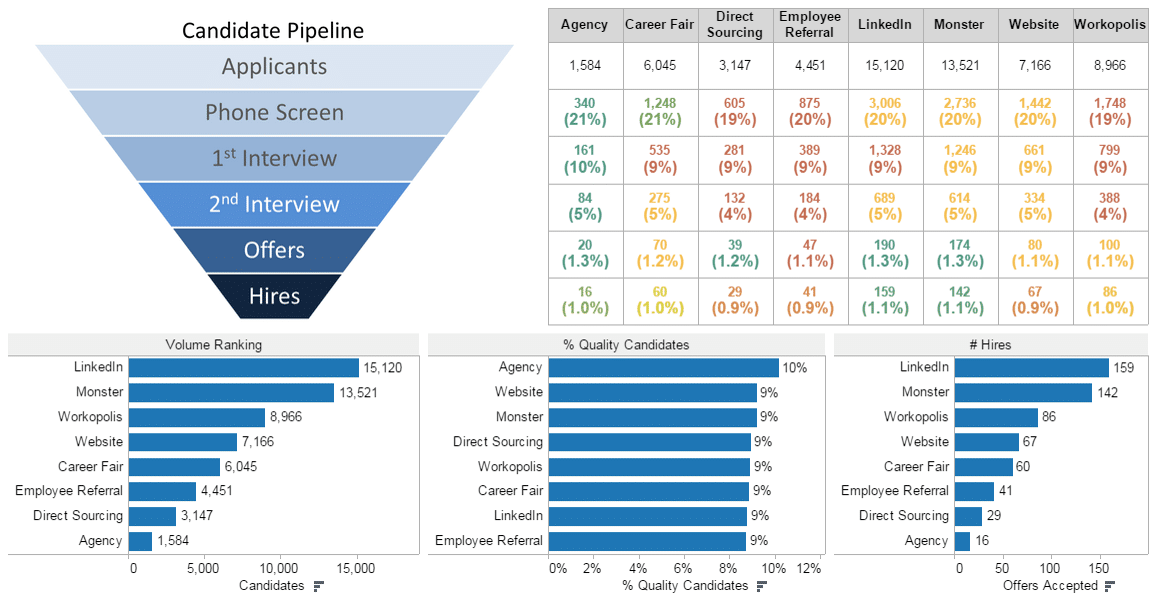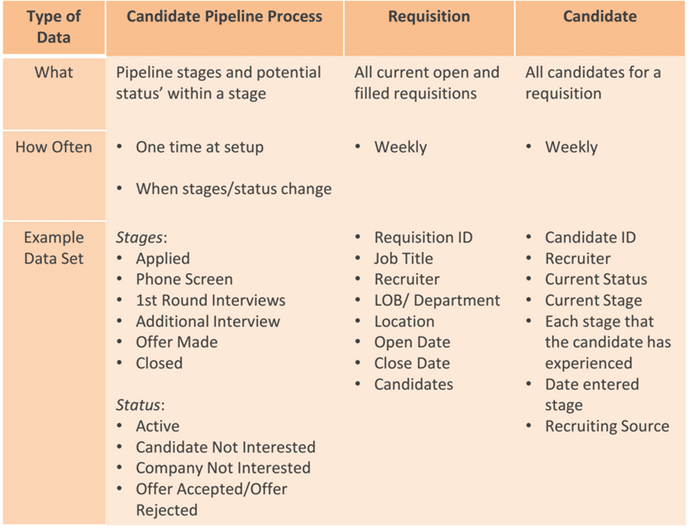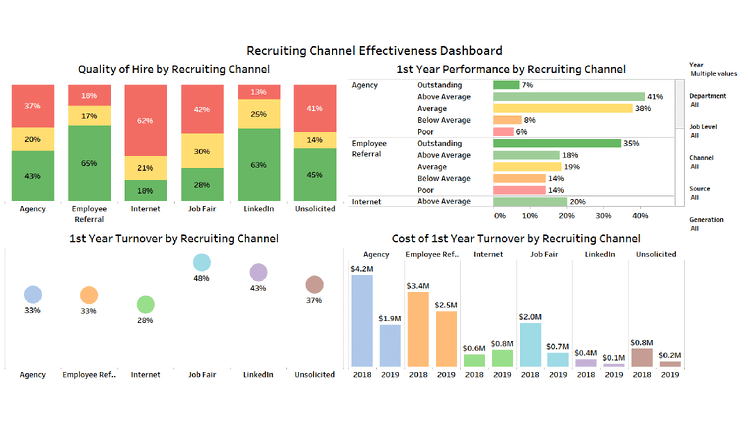How do you know where to invest recruiting dollars? Talent acquisition analytics can help.
While challenging, you can determine where to invest to improve how you attract, progress and hire quality candidates. There’s a ton of data available; however, it isn’t always the right level to inform decisions. A deeper look at your candidate data can tell you where to focus attention and investment to deliver timely, predictable, high-quality hires to the business.
Talent acquisition analytics can help. Here are suggestions to get started. Especially if your team is maxed out with daily activities and you cringe at the state of your data. Remember, it’s a journey. The key is to jump in and start with a goal or two in mind.
Step 1: Tie Analytics To Hiring Results
- Where do you struggle to attract, progress, and hire quality candidates as quickly as your business needs?
- Do you see a large pool of candidates for some roles, yet don’t find candidates that fit the interview criteria?
- Are some roles open a lot longer than you expect in some geographies yet fill quickly in others?
- Do you know which recruiting sources provide the highest-quality candidates?

Candidate Pipeline Analytics: Take a page from the sales and marketing playbook
If you seek to improve your ability to progress a quality applicant to close, candidate pipeline analytics can help. These analytics examine how candidates progress through the various recruiting stages. As a result, they can highlight what’s working, and what’s not, through the process.
Candidate pipeline analytics may be a new approach in recruiting, however, these analytics have proven effective for sales and marketing teams. Fore example, sales and marketing teams often struggle to find high-quality leads and then progress them efficiently to close the deal. Pipeline analytics give them the visibility to know where they are being effective. As a result, they understand what’s progressing fast enough to meet their business objectives.
Candidate pipeline analytics provide the same type of insight, but focused on your candidate pool. And the ability to move the high-quality candidates to hire.
Step 2: It’s all about the stage…

Candidate Pipeline stage-to-stage: measure volume and conversion rate between stages and see where you get stuck
Volume and conversion rates form the core of talent acquisition and candidate analytics. When analyzing your pipeline, conversion rate is a primary consideration. How well are you doing at converting candidates from initial application to the various stages? How well are you doing at converting from one stage to another? Know your bottlenecks and where you have high drop off rates. These pieces of information inform where to focus to improve.
You must also consider quality of hire. At the same time. Can your candidate pool deliver the number of quality hires required? Is it large enough?
Start-to-Stage Analytics
What is the quality of the candidate pool? For identified potential candidates, what volume and percentage do you categorize as quality? What volume and percentage eventually become hires? This can help you determine if you have the right sourcing strategy overall and for specific roles, geographies or recruiting channels.
How well do candidates progress through the pipeline? In this case, focus on your ability to convert from one stage to another. This helps you quickly identify where there are challenges in progressing candidates. For example, a high percentage of candidates convert from phone screen to 1st round interview. Then a low percentage get to the 2nd round interview. This suggests an issue with the criteria to screen candidates for interviews.
Segmentation is key
While your overall volumes and conversion rates provide a high-level view of where focus is required, it does not give you enough information to know what to do next. You must analyze the results on various criteria. What roles are more challenging than others to fill? What locations struggle to get an adequate candidate pool? Which recruiters do the best job at screening the quality candidates? This context is important to create the action plan and drive change.
To determine which talent acquisition analytics and segments matter most depends on your business priorities. For example, if you are growing fast and need to quickly expand the number of quality candidates, start with a focus on start-to-stage and segmenting by roles that are the focus for growth. Then use stage-to-stage to make sure progression happens as expected.
By tying back to business priorities, you determine the scope of the data needed for talent acquisition analytics.
Defining Quality
A key question to understand the effectiveness of the recruiting process:
“What is the quality of the candidates applying to our organization and how does it vary between geographies, roles, and sources?”
To answer this, you need to clearly articulate what quality means. A quality candidate is one to reach the hiring process stage at which you establish they meet key criteria for the role. Typically, we default to the initial in-person or hiring manager interview. However, you can determine what stage is best aligned to your organization process.
Step 3 – Dive Into the Data.
Cringe at the mention of data? Take a quick step back to understand what data is actually needed for talent acquisition analytics. To use candidate analytics, the focus must be collecting the data required to analyze stages and segments important to your business. If required, cleanup should focus on the key segments first and gradually move to the next step.
There are three types of data required to be able to analyze the volume and conversion rates in your candidate pipeline. These are candidate pipeline process data, requisition data, and candidate data.

This baseline data builds the baseline set of analytics. Consequently, you get insight into how well you attract, progress and hire quality candidates.
Step 4 – Refine The Results.
Review and share the initial results. Then you can further refine the analytic views (data visualizations) to tailor to your needs.

- Are there specific views/filters to add to support your business process?
- Are there questions that came up as you shared the results that need additional views?
Often we see questions evolve quickly after seeing the results for the first time. With this foundation in place, refining the results to segment by a new area or add a new analytic view can also occur very quickly.
With the analytic foundation, there is also an opportunity to tackle the next business priority or take the talent acquistion analytics to the next level – tying candidate information to employee progression. This is where analysis goes beyond the quality candidate to look at candidate characteristics in a quality hire. For example, what recruiting sources yield high performing employees? In other how-to-guides we dig into the analytics and data required to drive quality analysis from candidate to hire.
Bringing Talent Acquisition Analytics All Together
Getting started with talent acquisition analytics can be daunting. There’s lots of data from disparate systems and little time to determine how to use it effectively. But when you do, you’ll improve your ability to attract, progress and hire quality candidates.
A stepped process prioritized by key business questions ensures a fast start. Know it evolves over time. Also know that the experts at HireRoad can help. Let us show you how.